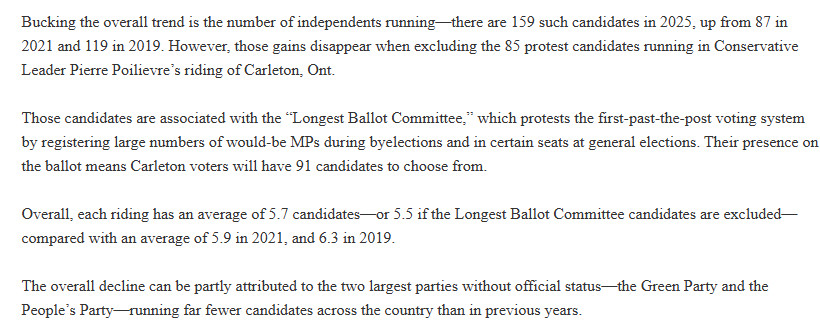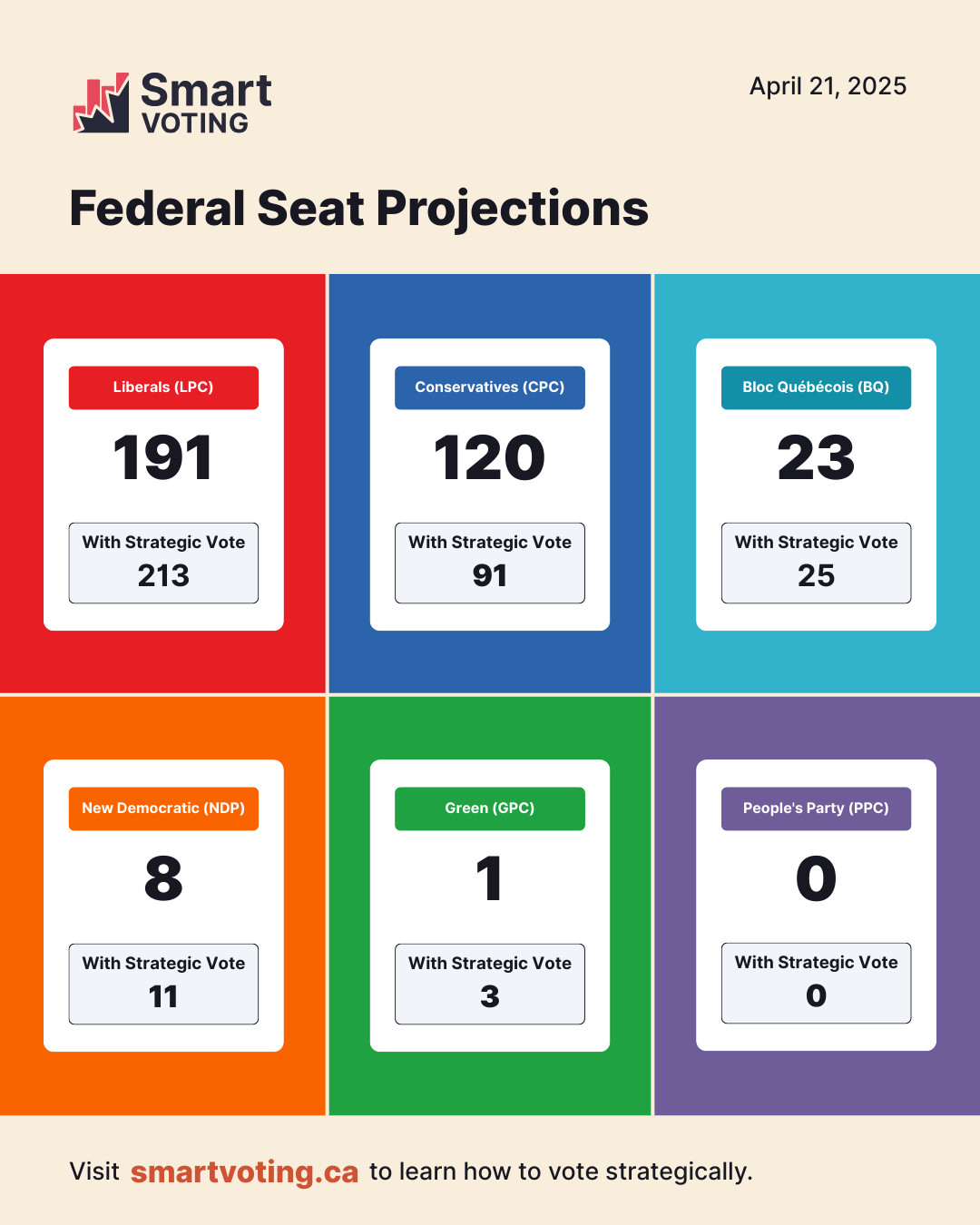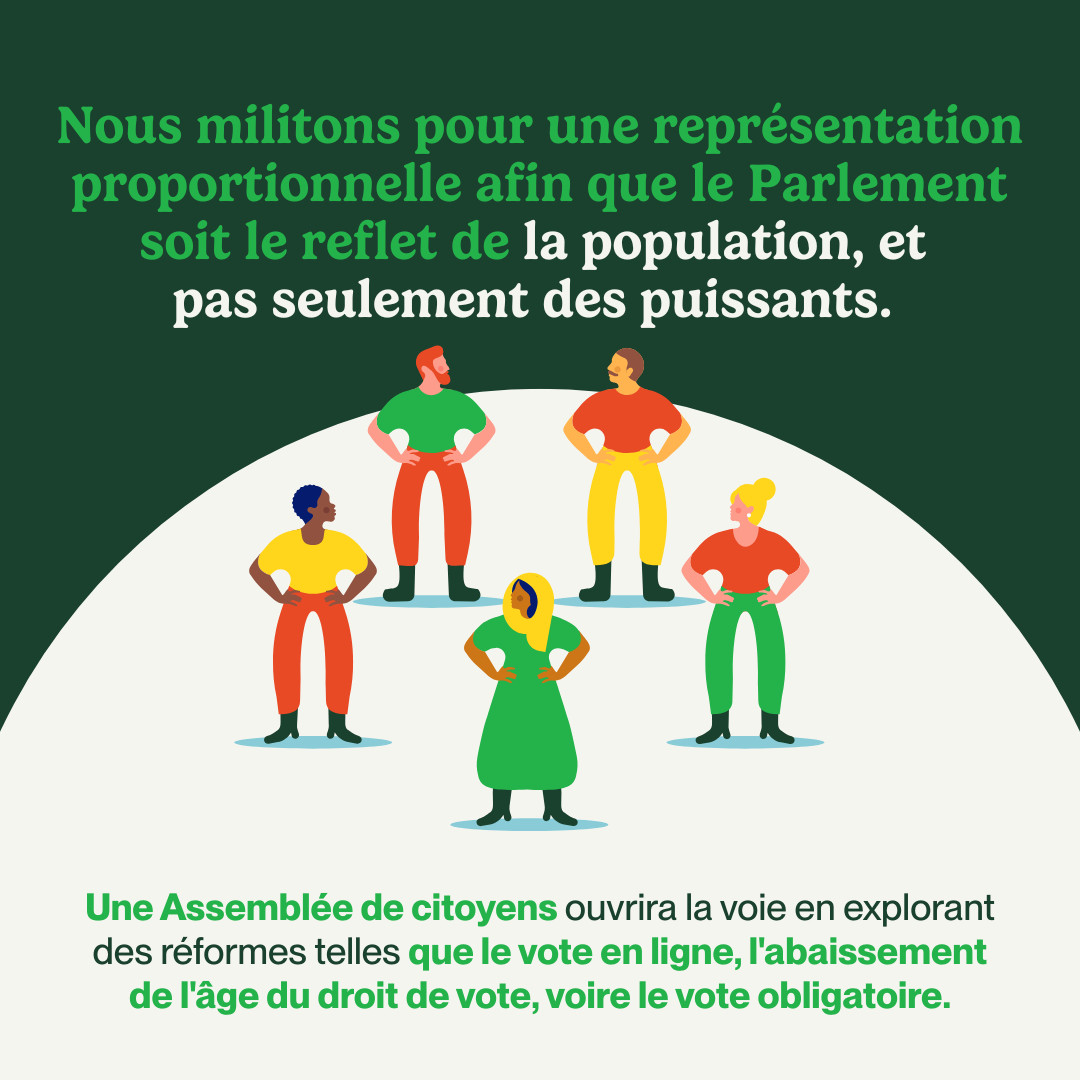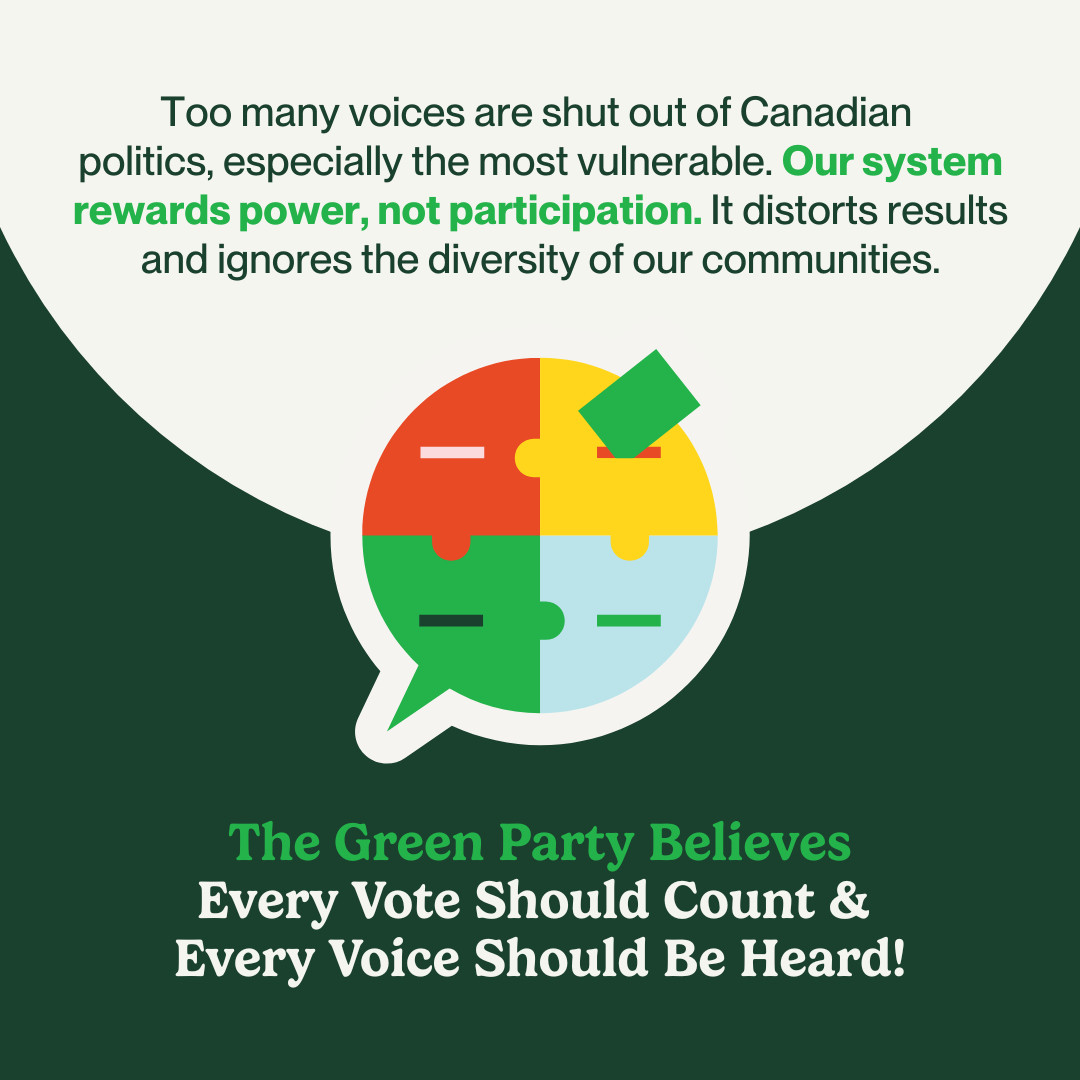The Montreal Gazette is American owned media pretending to be Canadian, infiltrating Canadian culture and politics.
The Ottawa Citizen is American owned media pretending to be Canadian, infiltrating Canadian culture and politics.
I appreciate your question about the potential trade-off between proportional representation and local representation, especially in large countries like Canada where population is concentrated in a few cities.
This concern about weakening the local representative link is one of the most common arguments against PR, but it's based on a false premise. Both Single Transferable Vote (STV) and Mixed Member Proportional (MMP) are designed specifically to maintain strong geographic representation.
Addressing large countries with urban concentration:
In MMP, rural and less populated areas still have their own local representatives, just as they do under FPTP. The difference is that additional regional representatives ensure overall proportionality. This addresses the specific concern of urban-rural balance while maintaining local connections.
With STV, while districts often elect multiple members, every voter is still guaranteed local representation. The key difference from FPTP is that under winner-take-all systems, only voters who supported the plurality winner get a representative aligned with their views. Under STV, virtually all voters get a local representative they actually voted for.
The "one accountable representative" advantage of FPTP is largely illusory:
You mentioned that FPTP allows voters to elect "an MP who is accountable to their specific community and can be voted out if they don't perform well." But this advantage exists only for the minority of voters who supported the winning candidate. In most ridings, 50-60% of voters end up with an MP they voted against.
These voters have no effective local representation they can hold accountable. With PR systems, a much higher percentage of voters have representatives they actually supported.
How PR systems actually enhance local representation:
-
MMP: Every voter has both a directly elected local MP (maintaining the geographic link) plus regional MPs who help create proportionality. This gives voters multiple representatives they can approach.
-
STV: Each voter has multiple representatives for their region. If one MP is unresponsive or doesn't share your views, you can approach another who better represents your perspective.
This multi-representative approach is actually more accountable than FPTP, not less. Under FPTP, if your local MP ignores your concerns, you have no alternative representation until the next election.
The fundamental purpose of an electoral system is to ensure citizens have effective representation in government. Only proportional representation consistently delivers on this principle while still maintaining appropriate geographic representation.
For visual explanations of how these systems maintain local connections, I'd recommend CGP Grey's videos on STV and MMP.
The Financial Post is American owned media pretending to be Canadian, infiltrating Canadian culture and politics.
only to become what amounts to a political practical joke
Why? Because Pedneault decided to stick to principles rather than capitulate and join a big tent party?
You're right to call me out on this, Alexis. While I shared this Green post, I'm not endorsing them. I'm just sharing content that highlights a key problem with our electoral system.
The "ignore vote splitting arguments" part directly relates to FVC's core mission - it perfectly illustrates why proportional representation is so urgently needed. Under our current system, voters are constantly pressured to vote strategically rather than for who they actually support.
My view has always been consistent: people should vote for candidates who support proportional representation, regardless of party. Greens🟢/NDP🟧/Bloc⚜️ consistently support PR, while Liberals and Conservatives have repeatedly blocked meaningful reform.
I believe voting for parties that promise proportional representation is always better than voting for those that don't. But I'm not telling anyone specifically who to vote for - just highlighting an example of how our broken system forces impossible choices on voters who care about both policy issues AND fair representation.
Sorry if this came across as partisan - that wasn't my intent.
Platform Wins and Fails | Curse of Politics.
Canadians have the right to run in an election for Parliament, it's not an inconvenience, as Jordan Leichnitz likes to present it as.
This isn't about "laziness" at all - it's about structural barriers to voting that disproportionately affect certain demographics.
Research consistently shows that convenience voting methods like mail ballots and early voting help increase participation among:
- People working multiple jobs or irregular hours
- Those with caregiving responsibilities
- People with mobility issues or disabilities
- Residents in areas with fewer polling stations (often in lower-income communities)
- Younger voters with less established voting habits
These demographics often (but not always) lean left, but that's correlation, not causation. The key point is that when we remove structural barriers to voting, participation tends to increase across diverse groups.
What's especially interesting is that under proportional representation, voter turnout is consistently higher across all demographics. When people know their vote will actually help elect someone who represents their values, they're more motivated to participate, regardless of party preference.
The real issue isn't about left vs. right, but ensuring our democratic systems provide equal accessibility for all eligible voters while maintaining security and integrity. With PR electoral systems, these concerns get addressed together - higher participation AND every vote counting toward representation.
I agree with your assessment. The transparency and verifiability of paper ballots is a fundamental strength of our current system that electronic voting can't easily replicate.
The trust issue you've highlighted is crucial. Paper ballots create a physical audit trail that can be manually recounted by ordinary citizens. With electronic systems, we'd need to trust not just the code (which most citizens can't verify), but also the entire chain of custody of both hardware and software. As you noted, even with sophisticated cryptographic solutions, the public trust element is essential for democratic legitimacy.
There are also serious security concerns. Electronic systems create "single points of failure" that paper ballots distributed across thousands of polling stations don't have. Computer scientists and security experts have consistently warned about these vulnerabilities. See:
While I'm passionate about modernizing our democracy, I believe the focus should be on fixing the mathematical problem at the core of our electoral system - where millions of valid votes simply don't count. Electronic voting might change how we collect votes but doesn't address this fundamental democratic deficit.
Paper ballots with proportional representation would give us both the security benefits you've described and ensure every vote counts toward representation. That seems like the right sequence of priorities for strengthening our democracy.
Great question! Fair Vote Canada (FVC) does have a broader mandate than just PR, though proportional representation remains their primary focus.
According to FVC's 2024-2027 Strategic Plan, they specifically mention "lowering the voting age to 16" as one of the democratic reforms they strategically amplify messaging around. So yes, they do advocate for this!
Their Vision, Mission and Values statement also notes that while PR is "the most fundamental and urgent change needed," they support a range of "democratic improvements which flow from our core values."
On electronic/internet voting, FVC doesn't seem to have an explicit position. This makes sense from a priorities perspective - while modernizing voting methods might improve convenience, it doesn't address the fundamental democratic deficit where millions of perfectly valid votes elect nobody at all.
Electronic voting also raises complex security and verification challenges. Any electronic system would need to uphold essential democratic principles including accessibility, voter anonymity, and verifiability. See:
Personally, I believe PR is the only viable long-term solution for ensuring every vote counts. Changing how we collect votes (electronic vs. paper) doesn't address the mathematical problem of winner-take-all systems discarding approximately 50% of ballots. But lowering the voting age to 16 would meaningfully expand democratic participation.
If you're interested in technology and electoral reform, you might consider getting involved with the proportional representation movement directly (particularly the List of social media accounts for Canadian Democracy) - we're always looking for volunteers with diverse interests and skills!











Globe & Mail and Toronto Star are currently, Canadian owned, but can be acquired (by foreign interest).
P.s. none of the Canadian owned news outlets in the infographic can be acquired.